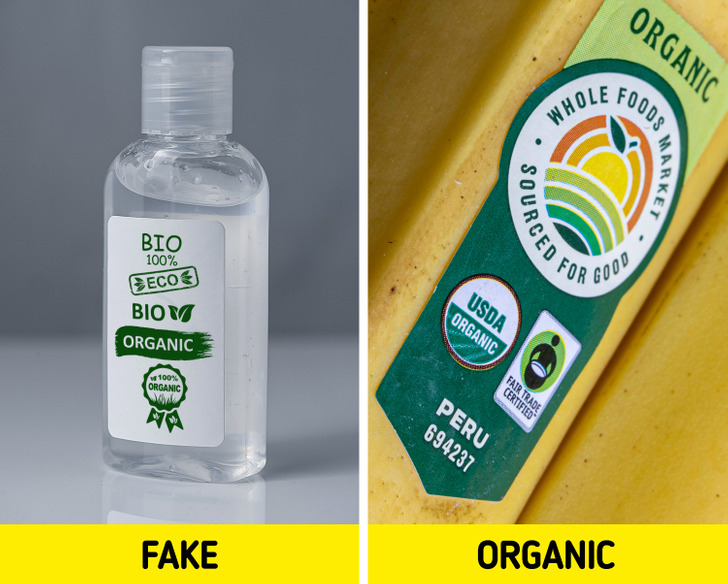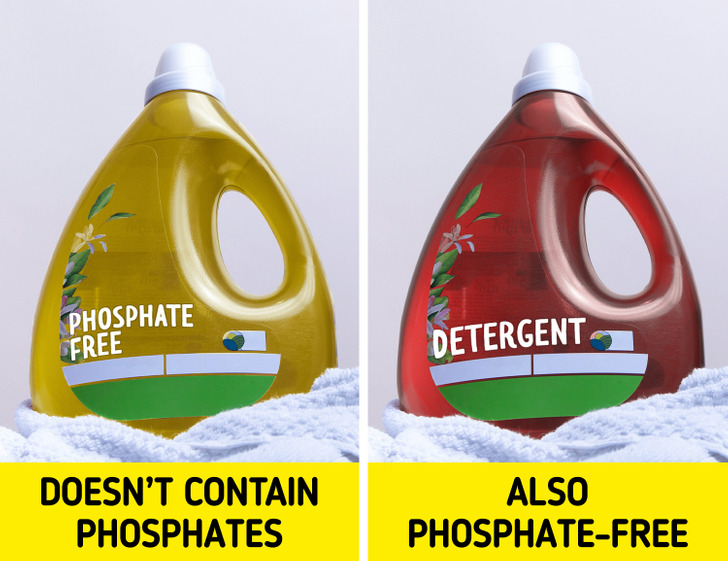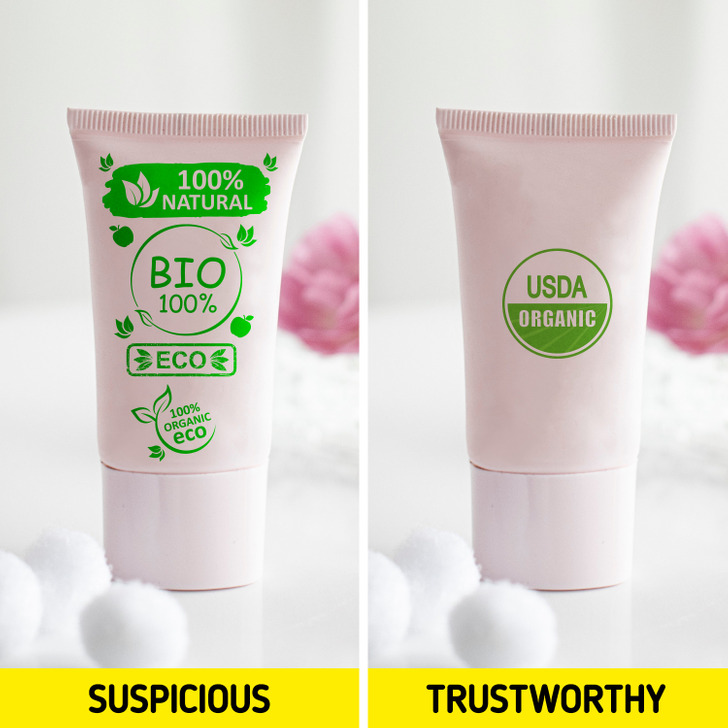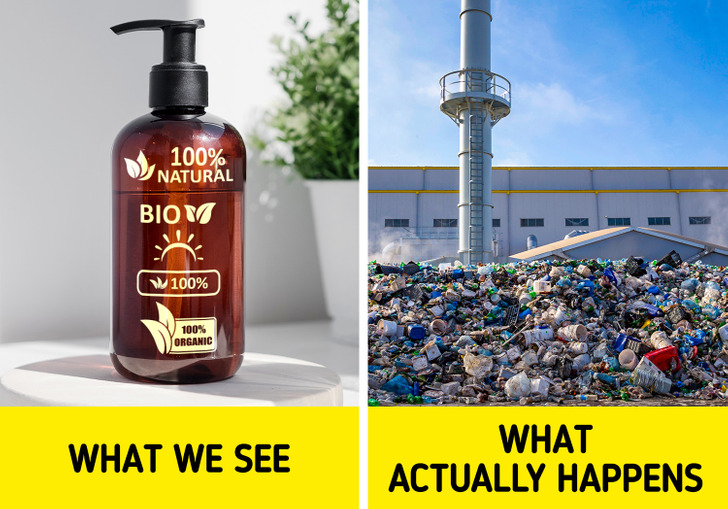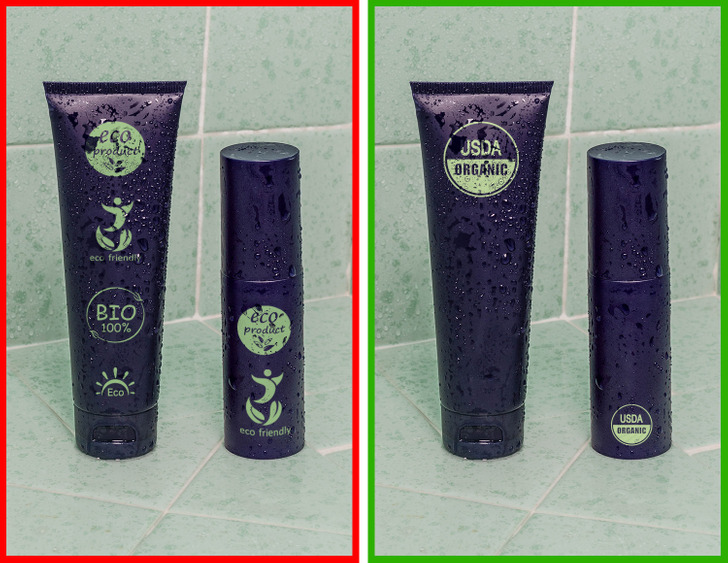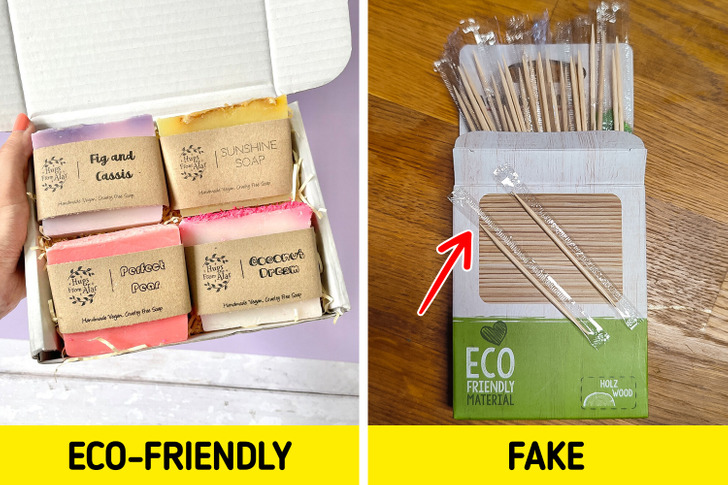When you get fooled 100+ times and then read this article...
7 Ways to Spot Fake Eco-Friendly Products
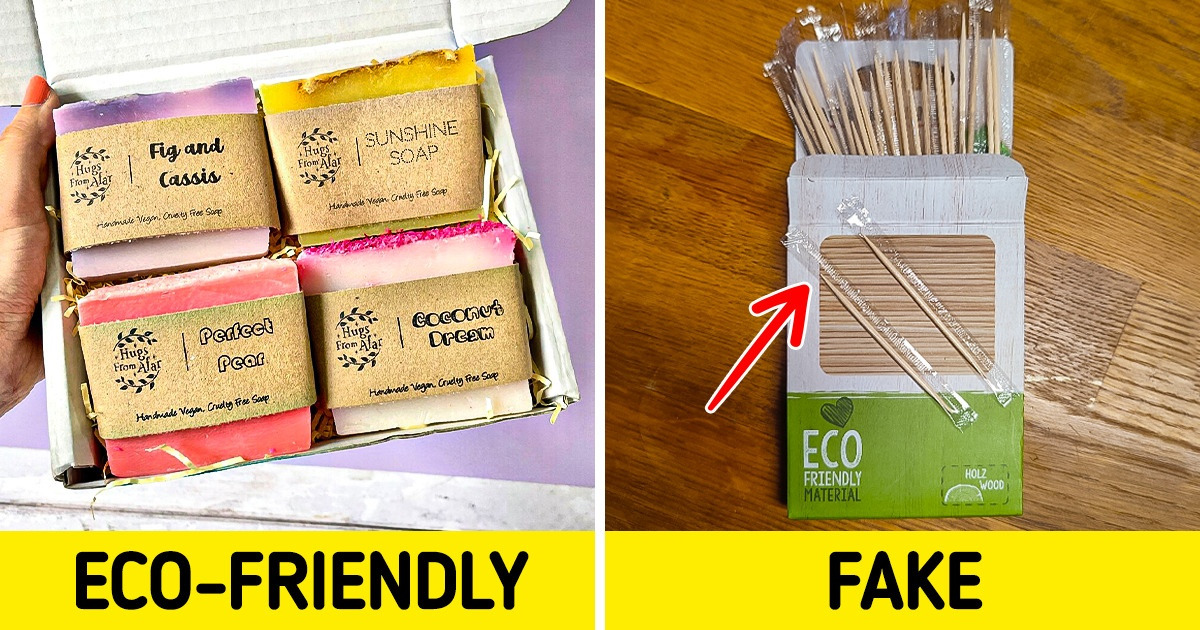
Some companies pretend to be environmentally friendly, all-natural, and many other “green” things. All of us can be greenwashed at some point. So when you’re going grocery shopping or choosing a detergent, bear in mind that seeing birds and leaves on the packaging doesn’t mean you’re holding an eco-friendly product in your hands.
Bright Side is here to help you choose the best products for you and your home.
1. Beware of fake certifications.
Certifications are signs that prove a product fulfills the claims it makes. It’s important to take a thorough look at labels. This way, you make sure that you aren’t falling for false promises. The most popular certifications that you can trust are Fair Trade, USDA Certified Organic, GOTS, Bluesign, and many others.
2. Stay away from “free of phosphates” detergents.
No, your detergent doesn’t contain phosphates. However, there’s no point in mentioning that since phosphates were removed from them a long time ago. Phosphate-free detergents are common and now considered to be the norm.
3. Don’t fall for buzzwords.
4. Do your research.
Some companies use particular environmentally friendly aspects of their product and emphasize it at all costs to hide other negative qualities. Yes, it might use eco-materials, however, during the production, greenhouse gases might be released or tons of plastic might be disposed of. Another warning sign is when a company only focuses on “eco” collections and doesn’t improve their business model.
5. Look out for typical designs.
Watch out for natural colors, the look of recycled paper, plants, and buzzwords. Dishonest companies try to make their product as aesthetically pleasing as possible. For example, animals on the packaging are supposed to make us think that a product is beneficial to wildlife. Meanwhile, natural food elements are shown to impose the belief that the ingredients were grown on a farm.
6. Contact companies.
It’s never too late to ask a company about its values. Just send them an e-mail asking them to clarify. If a company is truly dedicated to its mission, it will have no problem giving you more details about its products and goals.
7. Look at the bigger picture.
How do you spot fake eco-friendly products? How did you find out that a product was not environmentally friendly after you already purchased it?
Comments
Related Reads
My Husband Made Me Care for His Sick Mother, So I Served a Payback He Won’t Forget

14 Real-Life Plot Twists That Could Make Hollywood Drama Look Tame

My Parents Gave My Brother the House They Promised Me—And They Learned Their Lesson

I Refuse to Keep Paying for “Family Trips” I Never Get to Go On

I Refuse to Let My Father’s Secret Love Child Steal My Inheritance

My Parents Secretly Drained My Entire Savings Account—Then I Turned the Tables on Them
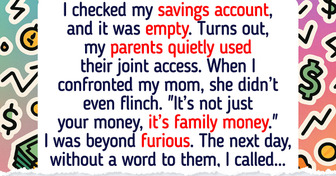
I Refuse to Share My Inheritance With My Sister—She Doesn’t Deserve a Penny of It

11 Heartwarming Stories That Prove Family Is Everything

I Refused to Let My Daughter (16) Share a Room With My Nephew (17), and the Fallout Was a Disaster

12 Family Stories With a Twist That Could Rival Any Sitcom Script

10 Real Life Stories Where Quiet Kindness Spoke the Loudest

My MIL Insulted Me in Public—I Taught Her a Lesson

